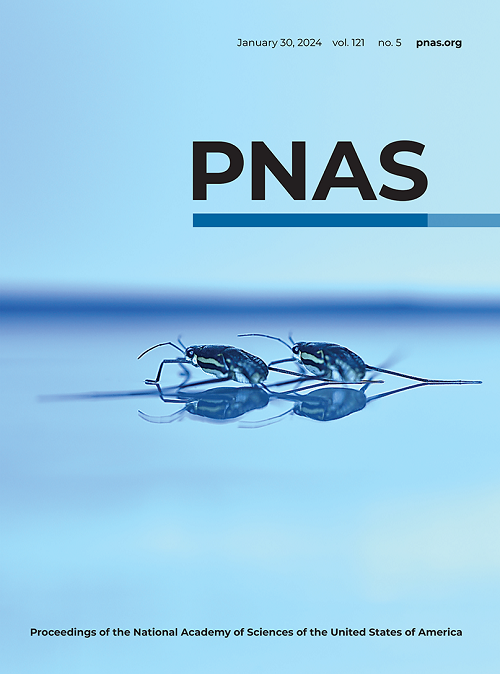不同受体转运的脊柱修饰胰高血糖素样肽- 1类似物的延长信号传导
IF 9.1
1区 综合性期刊
Q1 MULTIDISCIPLINARY SCIENCES
Proceedings of the National Academy of Sciences of the United States of America
Pub Date : 2025-04-01
DOI:10.1073/pnas.2407574122
引用次数: 0
摘要
信号持续时间和亚细胞定位正在成为G蛋白偶联受体(GPCR)功能的重要方面。胰高血糖素样肽-1受体(GLP-1R)是临床相关的B1类GPCR,在被天然激素GLP-1激活后刺激第二信使环磷酸腺苷(cAMP)的产生。在激素受体复合物通过内吞作用内化后,cAMP的产生仍在继续。在这里,我们报告了GLP-1类似物诱导相对于GLP-1延长的信号传导。在第18位,由(S, S)-反式-2-氨基环戊烷羧酸(ACPC)衍生的残基取代了单个β-氨基酸,通过保留受体内吞作用,增强了信号传递的持续时间。第18位的ACPC与第16位的α-氨基异丁酸(Aib)配对,消除了内吞作用,但维持了延长的信号传导。延长的信号传导对18位β残基的结构很敏感。与GLP-1:GLP-1R:Gs复合物相比,与GLP-1:GLP-1R:Gs复合物结合的两种GLP-1类似物的低温电子显微镜结构表明,结合肽的结构和动力学发生了实质性的变化。这些结构上的发现加强了一种新兴的观点,即受体结合状态下的激动剂动力学影响信号谱。我们的研究结果促进了对受体激活的结构基础的理解,并为探索GLP-1R激活后时空信号谱的影响引入了工具。本文章由计算机程序翻译,如有差异,请以英文原文为准。
Prolonged signaling of backbone-modified glucagon‐like peptide‐ 1 analogues with diverse receptor trafficking
Signal duration and subcellular location are emerging as important facets of G protein–coupled receptor (GPCR) function. The glucagon-like peptide-1 receptor (GLP-1R), a clinically relevant class B1 GPCR, stimulates production of the second messenger cyclic adenosine monophosphate (cAMP) upon activation by the native hormone, GLP-1. cAMP production continues after the hormone–receptor complex has been internalized via endocytosis. Here, we report GLP-1 analogues that induce prolonged signaling relative to GLP-1. A single β-amino acid substitution at position 18, with the residue derived from ( S , S )- trans -2-aminocyclopentanecarboxylic acid (ACPC), enhances signaling duration with retention of receptor endocytosis. Pairing ACPC at position 18 with a second substitution, α-aminoisobutyric acid (Aib) at position 16, abrogates endocytosis, but prolonged signaling is maintained. Prolonged signaling is sensitive to the structure of the β residue at position 18. Cryoelectron microscopy structures of two GLP-1 analogues bound to the GLP-1R:Gs complex suggest substantial alterations to bound peptide structure and dynamics compared to the GLP-1:GLP-1R:Gs complex. These structural findings strengthen an emerging view that agonist dynamics in the receptor-bound state influence signaling profiles. Our results advance understanding of the structural underpinnings of receptor activation and introduce tools for exploring the impact of spatiotemporal signaling profiles following GLP-1R activation.
求助全文
通过发布文献求助,成功后即可免费获取论文全文。
去求助
来源期刊
CiteScore
19.00
自引率
0.90%
发文量
3575
审稿时长
2.5 months
期刊介绍:
The Proceedings of the National Academy of Sciences (PNAS), a peer-reviewed journal of the National Academy of Sciences (NAS), serves as an authoritative source for high-impact, original research across the biological, physical, and social sciences. With a global scope, the journal welcomes submissions from researchers worldwide, making it an inclusive platform for advancing scientific knowledge.

 求助内容:
求助内容: 应助结果提醒方式:
应助结果提醒方式:


